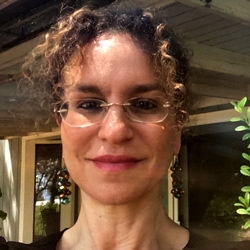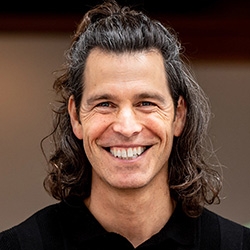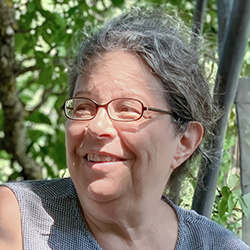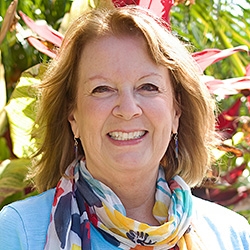

Search Results: fear
-
Want things to change in your community, but feel frustrated or don’t know what to do? Miki’s intriguing overview of how to apply the principles of NVC to social change movements may have the exact blend of inspiration and ideas you’re seeking!
-
Listen to this interview with Gregg Kendrick and one of his clients to learn how to successfully introduce NVC into an organization that is unfamiliar with the concept. Gregg’s client, Dale Neikirk, will be sharing how NVC has supported and improved the results of his insurance company, through Gregg’s masterly facilitation.
-
Join Jori and Jim Manske to explore, learn and practice an NVC approach to mourning and celebration.
-
Many of us check our full selves at the door when entering our workplace. Would you like to learn how to apply NVC principles at work instead? In this session, Jeff details how you can step into greater authenticity at work!
-
Telling yourself to be a certain way or have more of a certain quality (like courage), is a set-up for self-criticism and possibly freezing or avoiding. Instead, access effective action by asking yourself questions like: "If I could be or have that, what actions would be different inside or out?" "If I could be or have that, what needs would be met and knowing those are the needs, what could I do or ask for that would meet those needs?"
-
For each reactive pattern there is a perceived threat to a tender need. Knowing these tender needs helps us figure out how to interrupt these patterns and creating new ways of perceiving and relating to life. In addition to knowing the need, knowing the healing response and the primary reactive behavior helps with transformation.
-
Follow worry to the underlying universal need and discern wise action. To get there, we can try out prayer, wishes, savoring the need, or compassionate witnessing. If you notice and name the aspects of worry continuously, the compassionate witnessing practice will interrupt the habitual spinning of worry-filled stories. There are at least six things you can witness with curiosity. Read on for more.
-
To help you stay connected to yourself and the other person when in challenging discussions about COVID-19 vaccines or other hot issues, without labeling others as reactive or otherwise, you can begin by tracking signs of your own reactivity to bring mindfulness onboard, then shifting your attention to universal needs; and asking to connect about it later. Read on for more.
-
When we're faced with certain situations we tend to go into a fight, flight or freeze mode. While these can sometimes be helpful and even lifesaving, they can also be crippling when the situation may not be life-threatening. In this episode, we give you some tips on how to shift into a more intentional way of handling difficult situations.
-
Receiving anger from another can be a reactive trigger for many of us. In this brief segment, Arnina provides us a strategy for staying in the conversation instead of physically leaving.
-
Here's guidance on how to approach your inner experience when triggered or stuck in a distressing life experience. Self-Compassion in life can be experienced as: "There is room for life experience in me. There is an open space for ‘what is’ to be fully present in my inner experience". This exercise is more about tracing your felt experience than verbalizing it.
-
Reveal what's in your heart before asking a question to help build trust, especially if you're in an authority figure. Otherwise, your question may sound like a demand, blame, trap, intrusion or accusation, and it may elicit a defensive response. If you get a "question" like that, give them empathy. Read on for reflection questions to see how our revealing and our withholding impacts our relationships with others and with ourselves.
-
Duke Duchscherer shares that Restorative Circles have the ability to transform relationships. Groups may start with feelings of worry, anxiety, fear, anger, and even hatred. The dialogue process supports a shift to more ease, connection, and trust.
-
A theory of judgment is that it is how we make sense of life and quickly assess what is safe or not safe. However, this has somehow been translated into right/wrong thinking. In this video, Aya explores different kinds of judgments and examples of each.
-
Do your emotions ever feel overwhelming or out of control? You’re not alone. In this heartfelt video, Mary Mackenzie shares a simple yet transformative technique inspired by Nonviolent Communication (NVC) that helped her move past the fear of feeling too much.
-
Grieving reminds us of the preciousness of life, it helps us integrate loss, and it opens us to deeper compassion, inspiration, and joy. We need to create space in our lives to grieve fully.
-
- Welcome unpleasant feelings and meet their flow in and around the body
- Discover how you can enjoy Anger as a beautiful life force
- Realize insecurity and depression as a door to the core of your humanity
- Know how to use fear to firmly connect to your life and strength
-
Total inclusion is impossible: inclusion of all can often lead to exclusion of those who can't bear the behaviors of some. Many groups flounder and disintegrate because of too much inclusion. Limited resources and capacities may make it necessary to exclude. Keeping more coherent shared values and strategies may be another reason to place membership conditions so that what appears to be exclusion may give movements a chance to expand.
-
Build the capacity to choose vulnerability, deepen connection, and live with authenticity.
-
Trainer Tip: Let's start an abundance movement! We get great joy from contributing to others lives and allowing them to contribute to ours, let's not let fear get in the way.

Quick Links
Subscription Preferences
Stay In Touch!
Looking for ways to keep up with NVC Academy news, get special offers, free resources, or words of inspiration? Here are five ways to stay engaged:




















